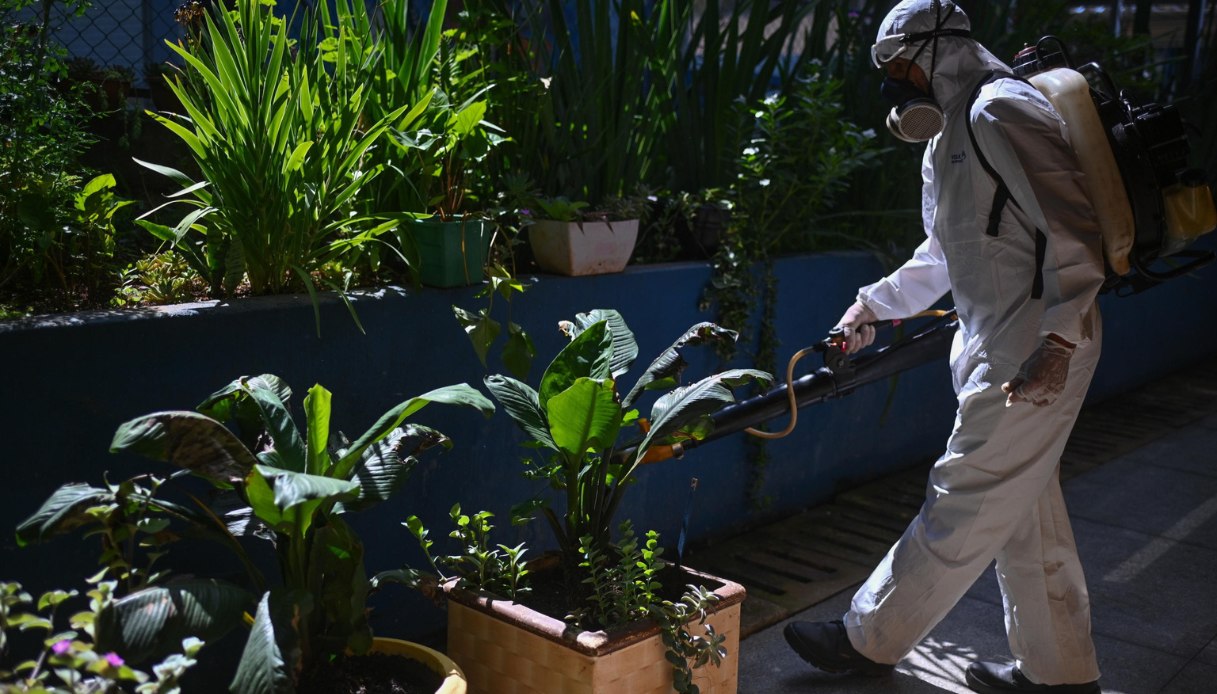It is still growingDengue alert Also in Italy. The Ministry of Health published one new circular to inform the Regions, placing further pressure on prevention and surveillance against the risk of indigenous transmission of the virus through the so-called tiger mosquito. Meanwhile, Brazil and Argentina are grappling with record infections. Let's take a closer look at what it is and what you need to pay attention to.
The alert for the “mosquito disease” grows
The General Directorate of Prevention of the Ministry of Health sent the third circular on Dengue to address the global increase in cases and prepare for the 2024 vector season.
As the Ministry itself reports on the information page, Dengue is one viral disease transmitted by mosquitoes of the genus Aedes infected by the Dengue virus, of which there are four different serotypes. It is an infectious disease that is extremely widespread in tropical and subtropical regions, capable of causing epidemic outbreaks even in continental Europe. It is transmitted to people through the bite of female mosquitoes.
It is endemic in over 100 countries in Africa, America, South and South-East Asia and the Western Pacific, but travel-associated imported cases are frequently reported in Europe. To date, it is considered the most important viral disease transmitted from mosquitoes to humans worldwide, with the number of cases increasing significantly in recent decades.
According to the WHO approximately half of the world's population is now at risk of Dengue, with an estimated 100-400 million infections per year. Although in most cases the disease presents asymptomatic or with few symptoms or as a self-limiting febrile illness, serious forms have been described, in some cases even fatal.
Dengue, the new circular from the Ministry of Health
Given the approach in Italy of the period of greatest activity of Aedes albopictus, the tiger mosquito so to speak, considered a very important vector for the transmission of the Dengue virus, as well as other arboviruses, the Ministry invites Regions and autonomous Provinces to prepare all the measures envisaged by the National Plan for prevention, surveillance and response to arboviruses – the Pna 2020-2025 – to reduce the risk of transmission.
In particular, it is recommended to enhance surveillance of human cases of Dengue throughout the national territory, especially in terms of timeliness, respect for communication flows and raising awareness among healthcare workers, including paediatricians and general practitioners, to allow the rapid identification of cases.
Maximum attention also to the implementation of all actions environmental remediation foreseen, aimed at reducing the breeding and shelter areas for mosquitoes. For example, it is essential to remove potential hotbeds where larvae nest, clean and carry out maintenance, mow uncultivated vegetation, increase measures to combat mosquitoes.
And again, identify, as per the guidelines reported in the attached Pna 2020-2025, all the potential sites at risk of the introduction of new species of invasive mosquitoes, such as tiger mosquitoes, and prepare all surveillance and control measures to prevent and combat the arrival and spread of these insects.
The Ministry also indicates the need for correct communication that increases awareness of the Dengue risk in the public sector, and therefore in schools, urban areas, recreational-sports places, etc., and among healthcare workers. The document also refers to the checks that must be carried out for the blood donationsincluding cord blood, and of organs, tissues and cells, including peripheral and medullary blood stem cells.
Next pandemic caused by mosquitoes? The causes
Meanwhile, more and more experts believe that the next pandemic could be caused by mosquitoes. Warmer temperatures and changing rainfall patterns in Europe are creating more favorable conditions for mosquitoes, ticks and other disease-carrying insects, according to the latest European Climate Risk Assessment.
But the climate change it is just one of the numerous factors that can increase the prevalence of infectious diseases in Europe: there are also contributors travel and tourism, international trade, urbanisation wildlife, water supply systems, foods, as well as some social trends, such as an aging population.
Overall, the geographic reach of some insect-borne diseases is expanding, as is the number of days per disease year that people are at risk.
For example, a surge in Dengue cases was recorded in France in 2023, including the detection of the first autochthonous (i.e. locally transmitted) case in the Île-de-France region: beyond the Alps alone, more than 1,400 cases have been reported since 27 October 2023 to date. France has reported indigenous dengue cases in 10 of the last 14 years, but with only single-digit numbers until 2020, when 13 cases were reported instead. Then in 2022 the number increased to 65 and in 2023 to 43.
Dengue endemic in Europe? Serious epidemics in Brazil and Argentina
With more than 5 million cases of Dengue reported globally, according to data from the World Health Organization, the European Union's share is still minimal, but within a few years, according to scientists, Dengue could become endemic in southern Europe.
In Italy there were no cases of Dengue before the 10 cases recorded in 2020which then became 76 from July to October 2023. Although most cases occurred in the middle of summer, in some areas transmission occurred as late as October.
Meanwhile, in Brazil they shoot further 2 million casesso much so that the country was forced to start its own first vaccination campaign against the potentially fatal disease. Also Argentina is facing the most serious epidemic of Dengue in its history, with the number of cases this year up 200% compared to the same period in 2023. But President Javier Milei has rejected calls to fund public health information campaigns as he pursues economic austerity .
Matthew is the seasoned editor at ‘Latest News And Updates’ with a knack for impactful journalism. His career, spanning a decade, started in local news, climbing the ranks with a commitment to truth and compelling storytelling. As the editorial lead, he steers the newsroom with passion, ensuring content integrity and fostering a well-informed readership.










